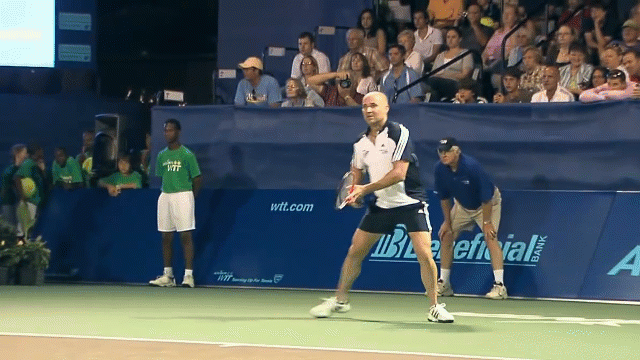Types of Forehand Back-Swings
The Categories:
We can categorize the forehand back-swings as three different types:
Full Loop / C Loop
Long Wind Up | Most Power | Timing Restraints
Half Loop / Abbreviated Loop
Shorter Wind Up| Medium Power | Easier Timing
Straight Take back
Little to No Wind Up| No Extra Power | Quickest Timing
While it is helpful to conceptualize these main types, take-backs mostly exist on a spectrum based on time. So while there are three main types, players will mostly exist somewhere in between.
As a note, don’t try to to lump a player exclusively as one type or the other, but understand that they will adapt their preparation in terms of the scenario. In most cases a player will rely either on the full loop or half loop for the majority of their groundies where they have a lot time. When it comes to returns or fast balls, most players will have a straight take back.
purpose of the loop
Overall, the the act of looping or partially looping your forehand creates power and rhythm. The power originates mostly from the shoulder joint, and helps get the momentum started on the swing. In terms of rhythm, the act of looping allows for the gradual development of the swing and helps set up a mental landmark for the start of your swing.
Full Loop
Through the racket and shoulder we form a full circle or “loop” on the take back. This often creates a “C” shape which is why some refer to it as the C loop. In terms of power, the full loop generates the greatest amount of power in the shoulder joint. It does, however, come with a trade off - TIME. Specifically, an extra half second to a quarter second on your back-swing. This makes it slightly more difficult to time which may inevitably creep on your unforced error count. This additional time, though small, makes it a necessity to be on top of your preparation, and can be very tough when balls come faster.
Users of Full Loop back-swings:
Juan Martín Del Potro
Footage: Essential Tennis
Ashleigh Barty
Footage: Hammer it Tennis
Pete Sampras
Footage: Top-Tennis Training
Andre Agassi
Footage: YellowFuzzy balls
Half Loop / Abbreviated Take-Back
As opposed to the full loop, the half loop is far more abbreviated. Instead of bringing the racket upwards into a loop, the focus is on bring the racket back and sideways ( having the racket face pointing towards the side fence). If you want to see what bringing the racket face sideways does I explain it on this post here. Power in tennis is moving away from the shoulder joint and more into trunk/hip rotation, which is why forming full loops have become less and less relevant in the tour. Yet with the half loop, we are not abandoning the loop altogether- merely shortening it. The result is a perfect balance of forming momentum, power, and quick timing. It is no wonder that the Big Three all fall under this category for the forehand.
Users of Half-Loop back-swing:
Roger Federer
Rafa Nadal
Footage: Essential Tennis
Novak Djokovic
Footage: Essential Tennis
Serena Williams
Footage: Tennis Academy 101
No loop / straight take back:
This usually is more situational, and not really applicable in a normal ground stroke rally. This adaptation occurs on faster balls such as return of first serves or a big shot. Beginners often start off with no take backs to allow them to focus purely on the swing and timing.
Modern Applications:
Agassi Return
Fed Return
Footage: Florian Mayer
Classical Users:
John McEnroe
Footage: Fuzzy Yellow Balls
Jimmy Connors
Footage: Garry Young USPTA











